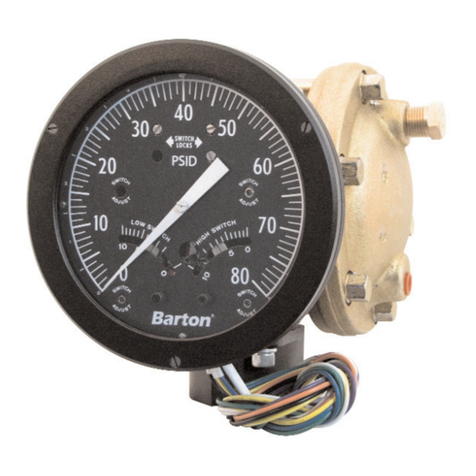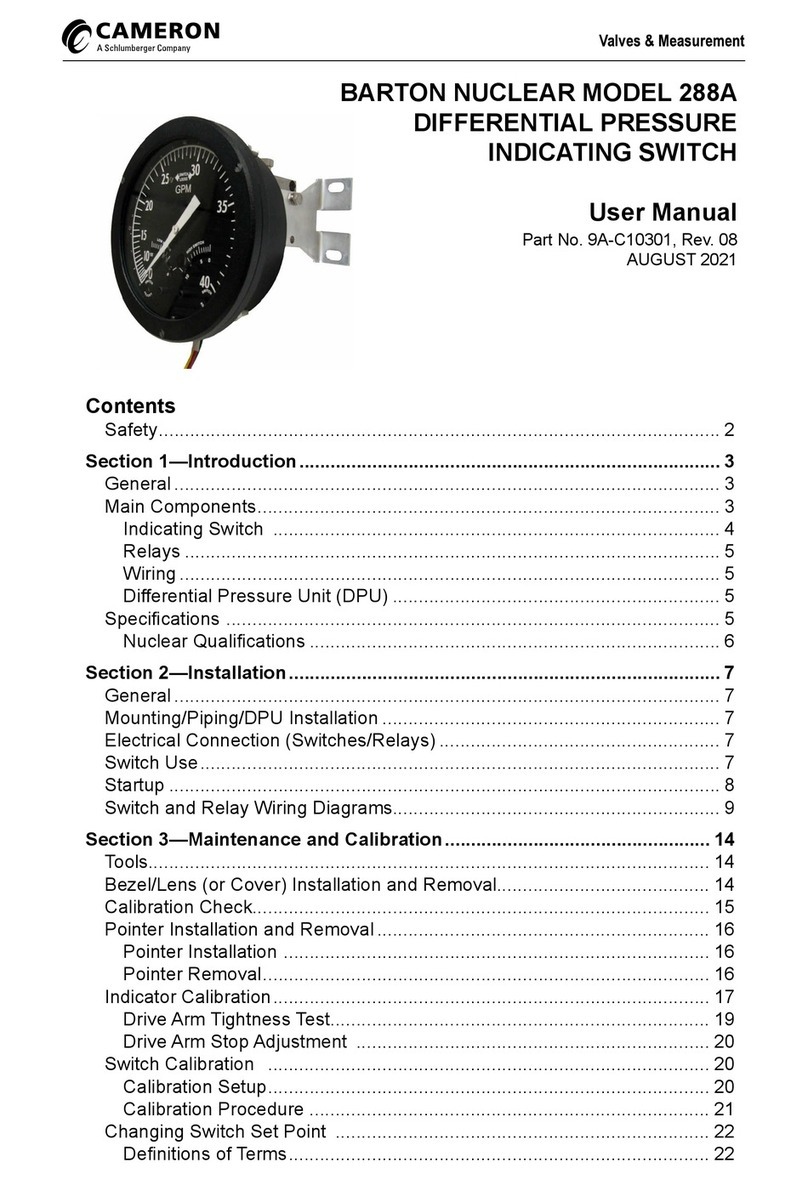3
Model 580A Differential Pressure Switch Section 1
Section 1—Introduction
General
The 580A Differential Pressure Switch actuates single or dual signal circuits
when predetermined limits of ow or level are exceeded. The DPU is con-
nected to the process or vessel by tubing or piping. Changes in differential
pressure (DP) at the DPU produce a mechanical output which moves a pointer
and switch actuation controls.
For ow measurements, the instrument is connected to the high-pressure
and low-pressure sides of a primary device in the process run. Normally the
primary device will be an orice plate, venturi, or ow tube.
For liquid level measurement applications, the instrument is connected to
measure changes in differential pressure caused by variations in hydrostatic
pressures of the liquid in a tank.
The 580A switch is available in three model variations:
• Indicating Switch (Model 580A-0). This model, shown on the manual
cover, has a thick tempered plate glass lens and provides a visual indica-
tion of the difference in the two monitored pressures.
• Blind Switch (Model 580A-2).This model has a solid metal cover and
provides no visual indication of differential pressure.
• Blind Switch with Internal Indicator. Unlike the indicating model with
the glass lens, there is no externally visible indicator. However, internally,
components are the same as in Model 580A-0. With the cover removed, a
user can use the internal indicator to determine DPU input pressure when
making adjustments to the switch setpoints.
The Model 580A uses two independently adjustable single-pole double-throw
(SPDT) snap-acting switches that are rated for high temperatures. Both sides
of the switches are wired, enabling the switches to serve both normally-open
and normally-closed applications. The direct-set switch contacts are adjustable
over a scale range of 10-90% nominal. Switches and all adjustments are read-
ily accessible when the cover is removed (see Figures 1.1 and 1.2, page 4).
The 580A Switches (indicating and blind) are qualied per IEEE 323-1974,
IEEE 344-1975, IEEE 381-1977and NUREG 0588, Rev. 1 for either Func-
tional and/or Pressure Boundary Integrity service in limited harsh environ-
ment applications.
The switch case is drawn stainless steel with a sealed glass header for the
electrical interface with the switches. No additional conduit seals are required
to ensure the integrity of the instrument.





























